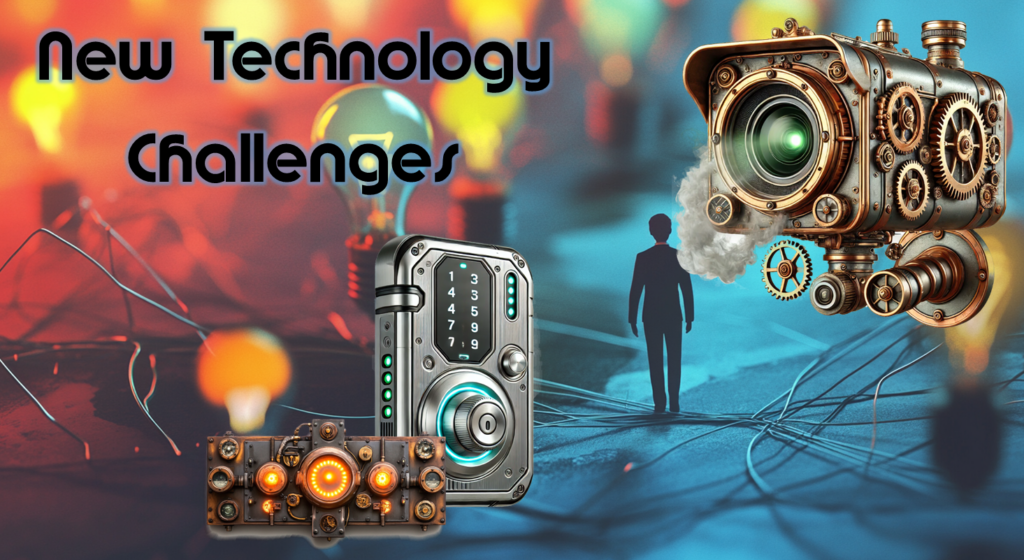
Overcoming the Challenges of Selling New Technology
Content Marketing Using Technical Education and Automated Publishing

Selling new technology is often a double-edged sword. On one hand, innovation has the power to revolutionize industries and solve pressing problems. On the other, introducing groundbreaking solutions to the market comes with significant challenges. Potential customers may not fully understand the value of your product, feel hesitant about transitioning to something unfamiliar, or resist changing their established ways.
This article describes how Manufacturers can use educational content marketing to enhance new product introductions.
The good news? These hurdles can be overcome with the right combination of education and an automated marketing process. Let’s explore why selling new technology is difficult and how smart strategies can pave the way for success.
The Challenges of Selling New Technology

- Lack of Awareness:
New technology often solves problems that customers may not even realize they have. The challenge lies in bridging the gap between your innovation and their understanding of its value. - Skepticism of the Unknown:
People tend to be wary of the unfamiliar. Potential buyers may question whether the technology is reliable, scalable, or worth the investment. - Overcoming the Status Quo:
Change can be daunting. Many customers are comfortable with existing solutions or processes, even if they are less efficient. Convincing them to adopt something new requires a compelling argument. - Complexity of the Product:
New technology is often intricate, and customers may struggle to see how it applies to their needs. If the benefits aren’t communicated, they may feel overwhelmed or uninterested. - Longer Sales Cycles:
Selling innovative technology often involves multiple stakeholders, requiring time to educate decision-makers, address concerns, and build trust.
The Role of Education in Driving Adoption
Education is the cornerstone of successfully selling new technology. Empowering customers with knowledge reduces uncertainty, builds trust, and showcases your product’s value.
- Simplify the Complex:
Break down technical jargon into clear, relatable terms. Use analogies, visual aids, and case studies to illustrate how your technology solves real-world problems. - Demonstrate Value:
Show customers your product’s tangible benefits, such as cost savings, efficiency improvements, or competitive advantages. Live demonstrations, free trials, and success stories can be particularly impactful. - Offer Continuous Learning:
Provide resources like webinars, tutorials, whitepapers, and FAQs to help customers understand your technology at their own pace. The more informed they are, the more confident they’ll feel about adopting your solution. - Address Objections Proactively:
Educate your audience about potential concerns—such as implementation time, cost, or integration issues—and explain how your product mitigates these challenges.
How Automated Marketing Can Accelerate Success

While education is essential, it can be time-consuming without the right tools. This is where an automated marketing process becomes invaluable. By leveraging automation, you can scale your efforts, reach more people, and guide prospects through the buyer’s journey more efficiently.
- Personalized Customer Journeys:
Automation tools allow you to segment your audience based on factors like industry, role, or pain points. This enables you to deliver tailored content that resonates with each group’s unique needs. - Lead Generation:
Automated email sequences triggered by customer actions can keep prospects engaged by delivering relevant information at the right time. For instance, follow up a webinar registration with a case study or a product demo invitation. - Consistent Messaging:
Automation ensures that your marketing efforts are consistent and professional, reinforcing your brand’s message across multiple touchpoints. - Data-Driven Insights:
Automated tools provide analytics on customer engagement, helping you identify what works and what doesn’t. Use this data to refine your messaging and focus on strategies that drive conversions. - Scalability:
Automation allows you to reach a broader audience without overburdening your team. Whether you’re targeting 100 or 10,000 potential customers, your message remains clear, timely, and impactful.
Combining Education and Automation for Maximum Impact

Integrating education into your automated marketing process allows you to create a seamless experience that guides prospects from awareness to adoption. Here’s how:
- Awareness Stage: Use automated campaigns to introduce your technology with straightforward, engaging content highlighting the problem it solves.
- Consideration Stage: Provide in-depth resources, such as whitepapers or videos, to explain how your product works and its benefits.
- Decision Stage: Share testimonials, ROI calculators, and free trial offers to reassure prospects that they can commit.
Conclusion
Selling new technology may be challenging, but it’s far from impossible. By focusing on education and leveraging automated marketing tools, you can overcome customer resistance, shorten sales cycles, and achieve lasting success.
The key is communicating your product’s value clearly, addressing concerns proactively, and delivering personalized, engaging content at scale. When you empower customers with knowledge and guide them through decision-making, you don’t just sell a product—you build trust, loyalty, and long-term relationships.
If you need more information about Content Marketing to improve channel success, please call 914-944-3425, email dennis@kintronics.com, or visit our Kintronics Media website.
